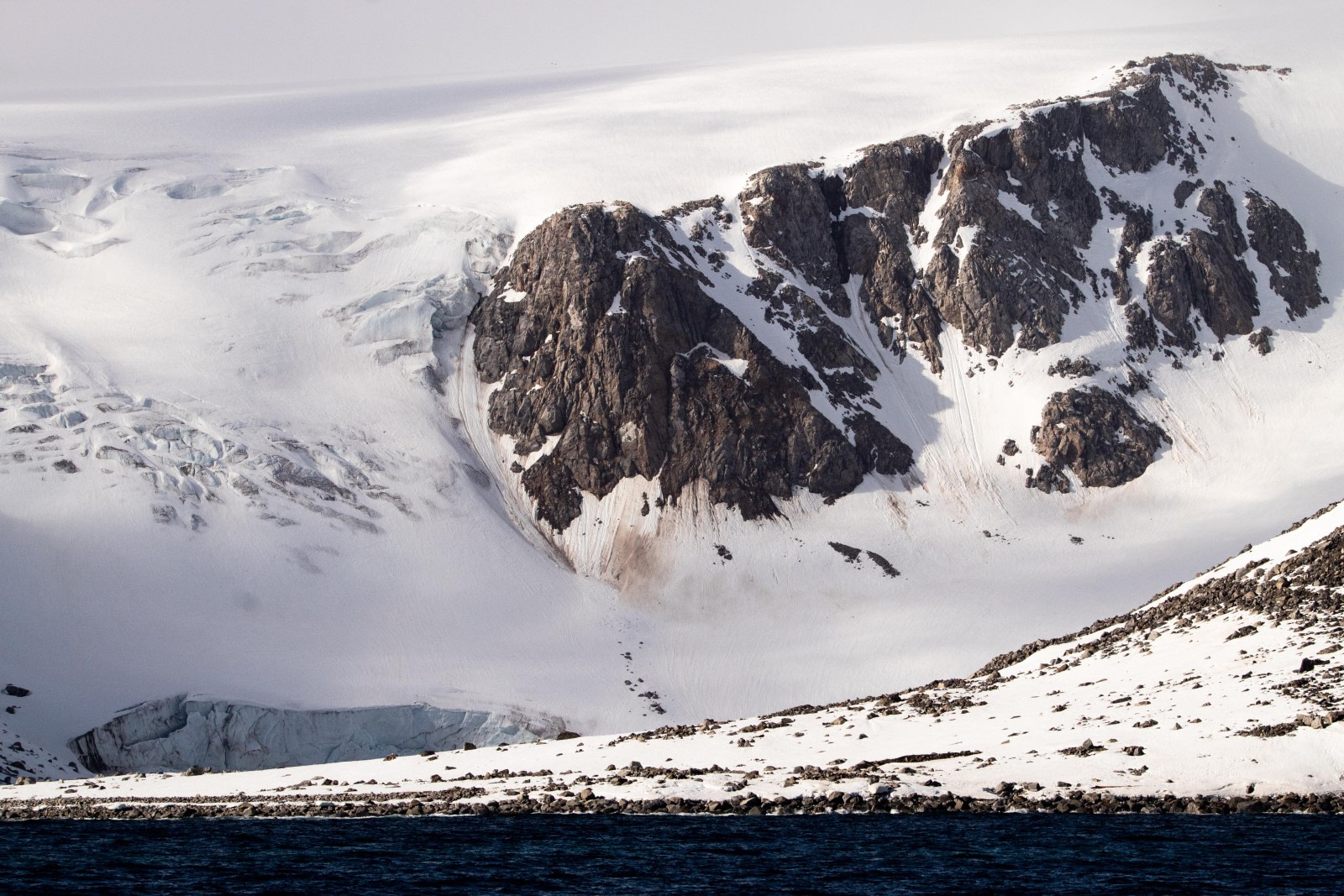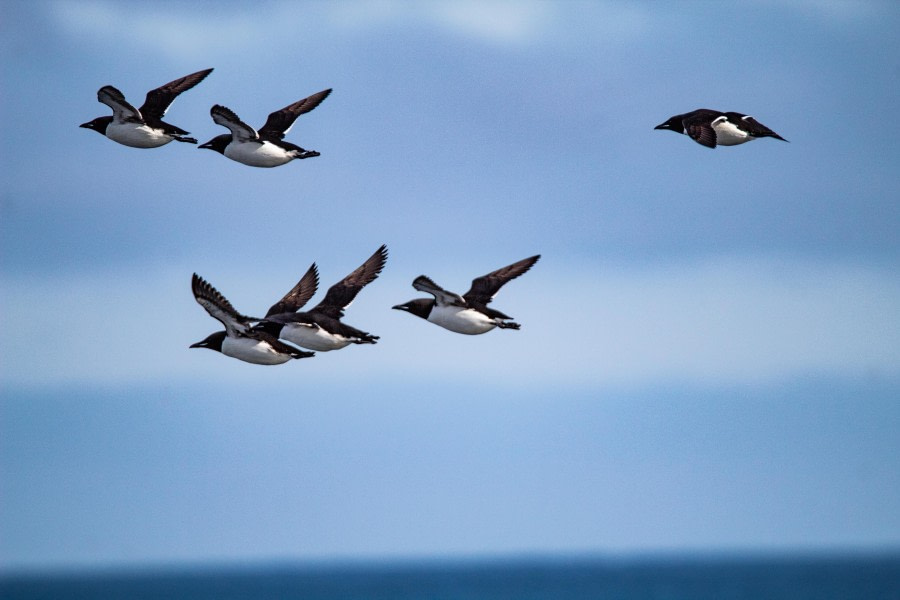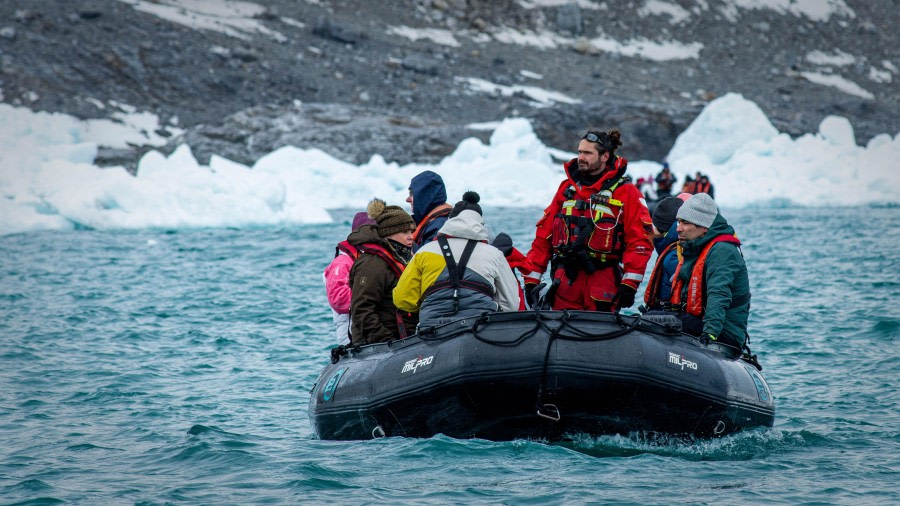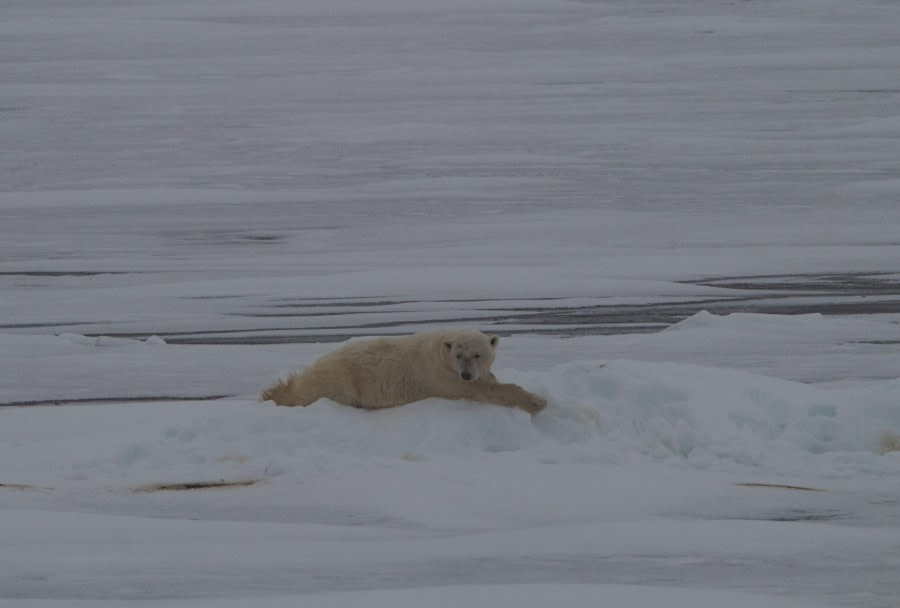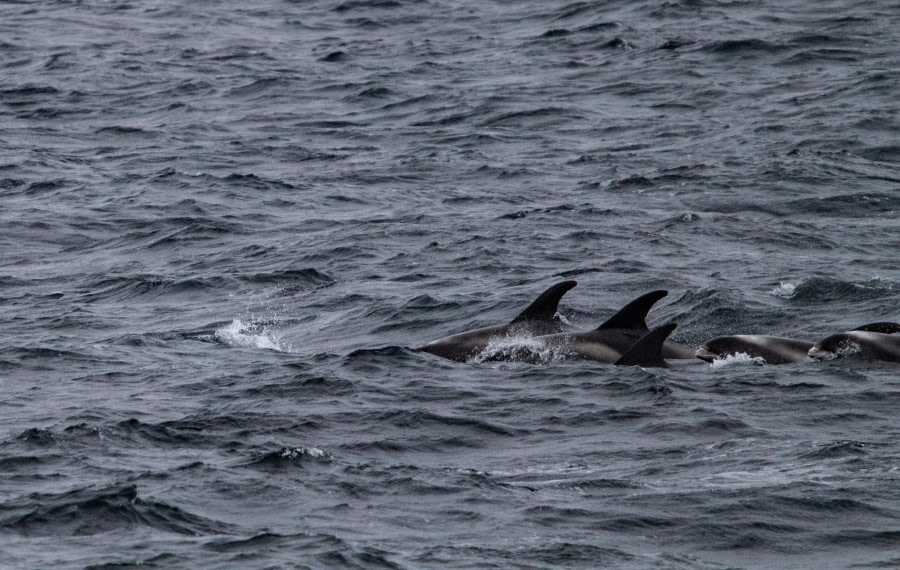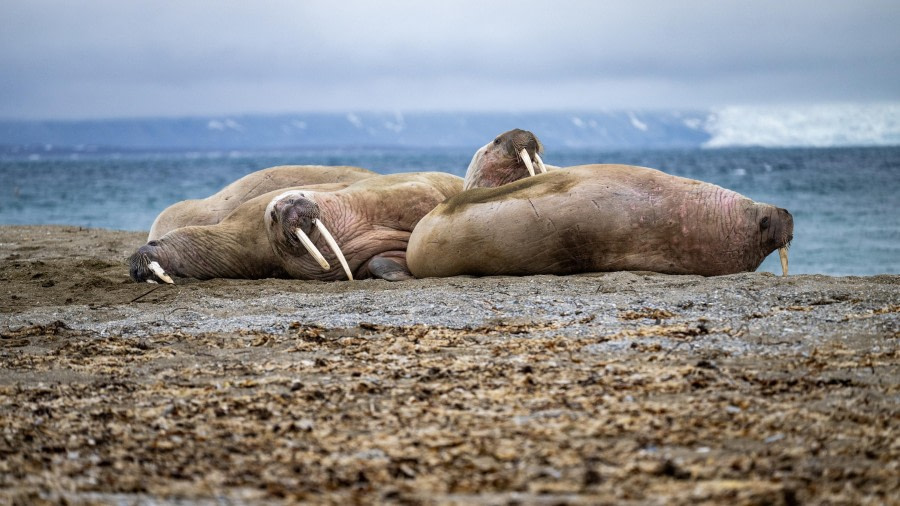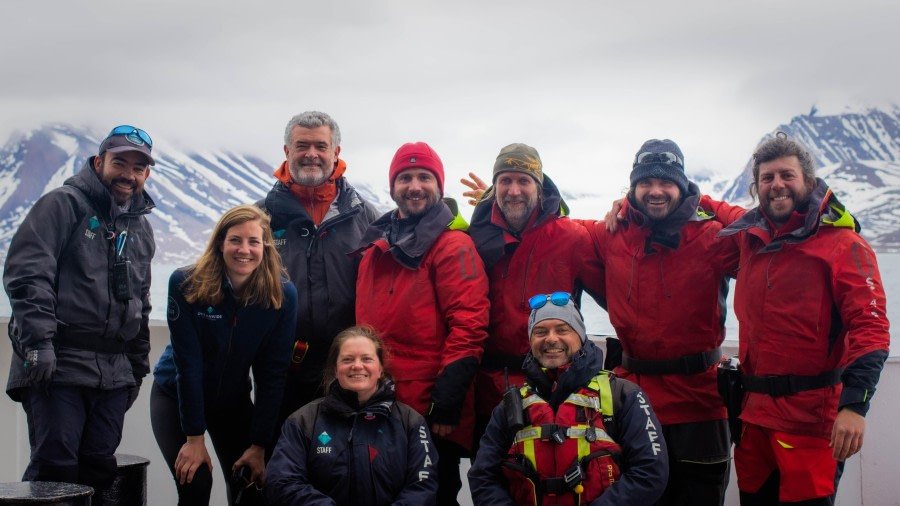| Fecha: |
08.06.2024 |
| Posición: |
79°36.5’N / 012°43.1’E |
| Viento: |
N 2 |
| Clima: |
Overcast |
| Temperatura del Aire: |
-1 |
Liefdefjorden – the fjord of love – that is how this fjord's name translates from Dutch. Plancius entered it early in the morning and slowly moved towards our morning landing site, which has an even stranger name – Texas Bar. Texas is tens of thousands of kilometers away from here, and the nearest bar is more than a hundred kilometers away in a straight line. What’s the mystery? It lies in the fact that there is a small hut on the shore, used by locals as a base camp during their hunting trips, and also just as a place to rest. The wall of the hut proudly bears the inscription “Texas Bar,” and inside on the shelf, there is a row of empty bottles of strong alcohol.
Our guides landed on the shore much earlier than us. As the threat of encountering a polar bear is ever-present, to ensure that there are no furry predators nearby, thorough scouting is required. Zodiacs darted back and forth along the shore, the guides in them armed with binoculars, studying the shoreline and various folds in the terrain. After that, being already on the shore, they explored several suspicious corners and, having made sure everything was calm, gave the go-ahead for us to join them.
We were to wait for boarding the Zodiac near the gangway. Our lovely doctor Annelou orchestrated the entire process, allowing groups of ten people to descend the gangway and take their places in the boats. Besides that, she made sure our life jackets were worn and fastened properly.
Two minutes of a swift ride – and here we are on the shore! The first thing to do was to take off the life jackets and put them in large white bags. Nearby the bags with life jackets lay cases for rifles. It would have been very interesting to peek into at least one of them, but it was strictly forbidden. Besides, the rifles were already loaded and hung by the guides on their shoulders.
We divided into groups according to our interests. Those who wanted to take a leisurely stroll along the shore, with the opportunity to take photos, joined the leisurely hikers' group. Those who wanted to walk a bit farther but not test their endurance joined the medium hiker’s group, and those who wanted to climb higher and walk farther formed the long hikers group. When all of us were ready for a walk, each group went its own way.
The weather was quite favourable. It was cool but not cold. A fresh wind was blowing but not strong enough to pierce through our clothes. The sky was cloudy, creating soft light and providing the opportunity to take quality photos. Nevertheless, patches of blue sky occasionally appeared in the clouds, and the sun’s rays joyfully broke through them to the ground, delighting us with bright light.
The old, slushy snow was dotted with traces of wild animals in places. One could see the tracks of reindeer, arctic foxes, birds, and even, in some distant spots, the huge paw prints of a polar bear. The snow was melting rapidly, and numerous streams ran down the slopes everywhere.
Where the ground had already freed itself from the snow cover, small purple clusters of flowers could be seen – the purple saxifrage, the very first flower, heralding the arrival of the late Spitsbergen spring. Tiny purple petals opened up, eagerly absorbing the cold northern sunlight. After all, these and other Spitsbergen plants have so little time. During the short summer, they must bloom and bear fruit, so as soon as the snow melts, the plants waste no time. By September, the snow will fall again, and they can sleep until June.
The high cliff rising above the shore served as home to many birds. From time to time, one could hear the cackling of barnacle geese and pink-footed geese. They had recently arrived and now were scurrying back and forth, occasionally landing to feast on last year’s grass and gather moss in their beaks to later line their nests with it. Brunnich’s guillemots, so similar to penguins, also flew back and forth. Somewhere high above, a glaucous gull – a pesky predator – wailed mournfully. And far away, the black-legged kittiwakes were chattering – cheerful gulls that love to nest on vertical cliffs.
We wove among large boulders, crossed snowfields, and, finding a spot with a beautiful view, contemplated the northern nature.
We also found time to peek into the hunting cabin with the sign “Texas Bar.” Spartan conditions, bunk beds, and a minimal set of kitchen utensils. No matter what, it’s better than staying in a tent. Here, a bear won't get in, you can light the stove, and the wind doesn’t blow through. A guest book lay on the table. Some of us made entries in it.
But the time for our landing was gradually coming to an end. We returned to the shore and put on our life jackets again. Goodbye, “Texas Bar”!
While we were having lunch, our ship Plancius moved to the far end of Liefdefjorden and stopped near the Monaco Glacier. After lunch, according to the plan, a Zodiac cruise along this glacier was to take place. While we were dressing warmly, our guides were lowering the Zodiacs into the water.
Whether the wind had strengthened, the proximity of the glacier played a role, or because you don’t move much sitting in the Zodiac, it seemed significantly colder here. We moved slowly along the front of the glacier, examining the huge masses of ice, cracked in places. Here and there, one could see bearded seals resting on ice floes. Unfortunately, they were quite far away, but through binoculars, one could see them quite well. Black-legged kittiwakes and Arctic terns, having chosen some ice floes, turned their heads watching us. The terns also chirped threateningly.
After about two hours, we, frozen but satisfied, returned to the ship. In the evening, Jan, our expedition leader, gathered us all in the main lounge and told us the plans for the next day, which promised to be no less interesting! Let's see what it brings us.
